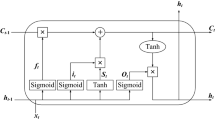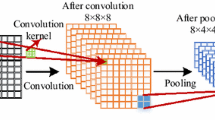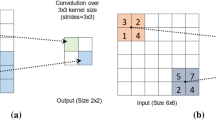Abstract
Motor fault diagnosis is critical to predictive maintenance of electrical motor condition monitoring, whereas the conventional motor fault diagnosis method cannot effectively diagnose conditions caused by motors’ complex structure, non-stationary signals and mechanical big data. To solve the mentioned problems and enhance the fault diagnostic accuracy and generalization performance under different actual motor conditions, this study proposes an efficient, noise-resistant, end-to-end deep learning algorithm based on a novel capsule network with gate-structure dilated convolutions (GDCCN) for motor fault diagnosis; such algorithm is subtly incorporated with the input gate structure of long short-term memory network (LSTM), the dilated convolutions, as well as the capsule network. In the GDCCN model, the raw vibration signals are directly fed into the input gate structure of LSTM, which are employed to effectively remove noise and harvest more valuable information from the input sample. The dilated convolution is exploited in the output denoising feature maps to exponentially expand the receptive field of convolution kernel, so more redundant information can be acquired to reduce the effect of randomness. The capsule network is introduced to generate a set of vector neurons to represent an entity existing in the feature maps; as a result, more specific feature representations can be extracted, and the feature can be comprehended, thereby enhancing the diagnostic accuracy. As revealed from the experimental results, the GDCCN-based intelligent motor fault diagnosis method outperforms the other classical DL algorithms in diagnosis accuracy, noise resistance, generalization and transfer-learning performance of different workloads.
















Similar content being viewed by others
References
Ali MZ, Liang XD (2019) Induction motor fault diagnosis using discrete wavelet transform. In: 2019 IEEE canadian conference of electrical and computer engineering (CCECE), Edmonton, AB, Canada, pp. 1–4
Dick P, Carl H, Nader S, Alireza MA, Sarabjeet S (2015) Analysis of bearing stiffness variations, contact forces and vibrations in radially loaded double row rolling element bearings with raceway defects. Mech Syst Signal Process 50–51:139–160
Zhu XY, Wang YJ (2018) Fault diagnosis of rolling bearings based on the MOMEDA and Teager energy operator. J Vib Shock 37(6):104–110
Jerkan DG, Reljić DD, Marčetić DP (2017) Broken rotor bar fault detection of im based on the counter-current braking method. IEEE Trans Energy Convers 32(4):1356–1366
Singh S, Kumar N (2017) Detection of bearing faults in mechanical systems using stator current monitoring. IEEE Trans Ind Inf 13(3):1341–1349
Rahman MM, Uddin MN (2017) Online unbalanced rotor fault detection of an im drive based on both time and frequency domain analyses. IEEE Trans Ind Appl 53(4):4087–4096
Khan T, Alekhya P, Seshadrinath J (2018) Incipient inter-turn fault diagnosis in induction motors using CNN and LSTM based methods. In: 2018 IEEE industry applications society annual meeting (IAS), Portland, OR, pp. 1-6
Abdellatif S, Aissa C, Hamou AA, Chawki S, Oussama BS (2018) A deep learning based on sparse auto-encoder with MCSA for broken rotor bar fault detection and diagnosis. In: 2018 International conference on electrical sciences and technologies in maghreb (CISTEM), Algiers, pp. 1–6
Thirukovalluru R, Dixit S, Sevakula RK, Verma NK, Salour A (2016) Generating feature sets for fault diagnosis using denoising stacked auto-encoder. In: 2016 IEEE international conference on prognostics and health management (icphm), Ottawa, ON, pp. 1-7
Rauber TW, Varejão FM, Fabris F, Rodrigues A, Ribeiro MP (2013) Automatic diagnosis of submersible motor pump conditions in offshore oil exploration. In: IECON 2013 —39th annual conference of the IEEE industrial electronics society, Vienna, pp. 5537–5542
Wen L, Li XY, Gao L, Zhang YY (2018) A new convolutional neural network-based data-driven fault diagnosis method. IEEE Trans Ind Electron 65:5990–5998
Amiruddin AAAM, Zabiri H, Taqvi SAA et al (2020) Neural network applications in fault diagnosis and detection: an overview of implementations in engineering-related systems. Neural Comput Appl 32:447–472
Zhou S, Tan B (2020) Electrocardiogram soft computing using hybrid deep learning CNN-ELM. Appl Soft Comput 86: 105778
Afrasiabi S, Afrasiabi M, Parang B, Mohammadi M (2019) Real-time bearing fault diagnosis of induction motors with accelerated deep learning approach. In: 2019 10th international power electronics, drive systems and technologies conference (PEDSTC), Shiraz, Iran, pp. 155–159
Kao I, Wang W, Lai Y, Perng J (2019) Analysis of permanent magnet synchronous motor fault diagnosis based on learning. IEEE Trans Instrum Meas 68(2):310–324
Pandarakone SE, Gunasekaran S, Asano K, Mizuno Y, Nakamura H (2019) A study on machine learning and artificial Iitelligence methods in detecting the minor outer-raceway bearing fault. In: 2019 IEEE International conference on industrial technology (ICIT), Melbourne, Australia, pp. 994-999
Zhang C, Bengio S, Hardt M, Recht B, Vinyals O (2016) Understanding deep learning requires rethinking generalization. ArXiv, 2016, abs/1611.03530
Krueger D, Ballas N., Jastrzebski S, Arpit D, Kanwal MS, Maharaj T, Bengio E, Fischer A, Courville AC (2017) Deep Nets Don’t Learn via Memorization. In Proceedings of the International Conference of Learning Representations (ICLR) , Toulon, France, 24–26
Zhang W, Li C, Peng G, Chen Y, Zhang Z (2018) A deep convolutional neural network with new training methods for bearing fault diagnosis under noisy environment and different working load. Mech Syst Signal Process 100:439–453
Zhang W, Peng G, Li C, Chen Y, Zhang Z (2017) A New deep learning model for fault diagnosis with good anti-noise and domain adaptation ability on raw vibration signals. Sensors. 17(2):425
Hochreiter S, Schmidhuber J (1997) Long short-term memory. Neural Comput 9:1735–1780
Yu F, Koltun V (2015 ) Multi-scale context aggregation by dilated convolutions. CoRR, 2015, abs/1511.07122
Long J, Shelhamer E, Darrell T (2015) Fully convolutional networks for semantic segmentation. In: Proceedings of the IEEE conference on computer vision and pattern recognition (CVPR), Boston, MA, USA, 7–12 June 2015, pp. 3431–3440
Oord AVD, Dieleman S, Zen H, Simonyan K, Vinyals O, Graves A, Kavukcuoglu K (2016) Wavenet: a generative model for raw audio. arXiv 2016, arXiv:1609.03499
Kalchbrenner N, Espeholt L, Simonyan K, Oord AVD, Graves A, Kavukcuoglu K (2016) Neural machine translation in linear time. arXiv 2016, arXiv:1610.10099
Borovykh A, Bohte S, Oosterlee CW (2017) Conditional time series forecasting with convolutional neural networks. arXiv 2017, arXiv:1703.04691
Zhuang Z, Lv H, Xu J, Huang Z, Qin W (2019) A deep learning method for bearing fault diagnosis through stacked residual dilated convolutions. Appl. Sci. 9:1823
Palazuelos AR, Droguett EL, Pascual R (2019) A novel deep capsule neural network for remaining useful life estimation. Proceedings of the Institution of Mechanical Engineers, Part O: Journal of Risk and Reliability 234:151–167
Sabour, S.; Frosst, N.; Hinton, G.E. Dynamic Routing Between Capsules. Advances in Neural Information Processing Systems, December 2017, 3857-3867
Cheng X, He J, He J, Xu H (2019) Cv-CapsNet: complex-valued capsule network. IEEE Access 7:85492–85499
Wang Z, Zheng L, Du W, Cai W, Zhou J, Wang J, Han X, He G (2019) A novel method for intelligent fault diagnosis of bearing based on capsule neural network. Complexity 6943234(1–6943234):17
Chen, T., Wang, Z., Yang, X.P., Jiang, K. A deep capsule neural network with stochastic delta rule for bearing fault diagnosis on raw vibration signals. Measurement: Journal of the International Measurement Confederation, 2019, v 148, December
Zhu Z, Peng G, Chen Y, Gao H (2019) A convolutional neural network based on a capsule network with strong generalization for bearing fault diagnosis. Neurocomputing 323:62–75
Glorot, X., & Bengio, Y. Understanding the difficulty of training deep feedforward neural networks. AISTATS, 2010
Maaten LVD, Hinton GE (2008) Visualizing data using t-SNE. J Mach Learn Res 9:2579–2625
Smith WA, Randall RB (2015) Rolling element bearing diagnostics using the Case Western Reserve University data: a benchmark study. Mech Syst Signal Process 64–65:100–131
Funding
This research received no external funding.
Author information
Authors and Affiliations
Contributions
Y.L., B.L., and B.J. conceived and designed the research. Y.L. and B.L. collected the data and conducted the research. B.L. and B.J. provided the experimental equipment. Y.L. analyzed the results of experiment and wrote the original draft of the paper. B.J. supervised the research and reviewed the paper. Y.L. had primary responsibility for the final content. All authors read and approved the final manuscript.
Corresponding author
Ethics declarations
Conflicts of interest
The authors declare no conflict of interest.
Additional information
Publisher's Note
Springer Nature remains neutral with regard to jurisdictional claims in published maps and institutional affiliations.
Rights and permissions
About this article
Cite this article
Liang, Y., Li, B. & Jiao, B. A deep learning method for motor fault diagnosis based on a capsule network with gate-structure dilated convolutions. Neural Comput & Applic 33, 1401–1418 (2021). https://doi.org/10.1007/s00521-020-04999-0
Received:
Accepted:
Published:
Issue Date:
DOI: https://doi.org/10.1007/s00521-020-04999-0




